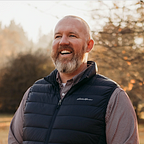Reflections on the Great Idaho STEM Together
On Tuesday & Wednesday August 17th and 18th, I participated in the Great Idaho STEM Together conference here in beautiful Coeur d’Alene. These fantastic experiences impacted me.
Opening Keynote
Eli Luberoff, Founder & CEO of Desmos, opened the conference with a joyous and playful keynote. A gifted storyteller, his good-willed irreverence for American public school traditions hit me right in the feels. What a joy to hear such skepticism toward technology designed to think for us. Eli bathed us in examples of student & machine collaboration. The result? Real learning for students.
This dude gets it.
I’m not used to finding such kindred spirits among math educators. So rarely, in fact, that at one point I very seriously considered rushing the stage to bear hug him. I’m a little bummed I didn’t. I did however clap VERY LOUDLY in support of a particularly moving story of students & technology working together. I hoped others might join in my manual endorsement, but it wasn’t to be. Story of my life.
I already loved the desmos calculator, but am VERY LATE to the desmos activities party. Have you tried any of them? Just be sure to give yourself plenty of time when you try out marbleslides and Taco Truck.
Exploring the Standards for Mathematical Practice
My Teaching Partner Rick Biggerstaff and I Presented how we explored the Standards for Mathematical Practice (SMP) at Riverpoint Academy throughout the past few years.
Our presentation this week built on that first year, and extended into a time of storytelling, highlighting the beauty of what can happen in an interdisciplinary high school environment. When we stopped looking for math problems and began finding problems that required mathematical thinking, the SMP came alive. As it turns out, the SMP are EVERYWHERE, ironically most often outside the traditional math classroom.
Field trip to Gizmo
Gizmo is many things: non-profit makerspace, training center, a hub for collaborative problem-solving, and an evolving education provider and teacher training center. In my role this year as the Innovative Educator @ Gizmo, I’ve been charged with engaging preservice and inservice teachers in learning Maker Mindsets and bringing hands-on experience into the classroom.
The term “Maker” has gained popularity in the past 10 years, but, as is common with popular education jargon, it has also lost meaning. We claim the title of “Maker” at Gizmo and align with FabLearn, MakerEd.org, and UTeach Maker in making Seymour Papert’s Constructionist pedagogy our foundation. Do you know about Papert, Constructionism and its relationship to Piaget’s Constructivism? Would you like to learn more? Read this, starting with the crucial foreword by Dr. Paulo Blikstein
Gizmo hosted a Field Trip for 20 STEM Together teachers. In a whirlwind two hours they toured, made, reflected, planned a lesson, struggled, and reflected again. Our hope was to give teachers a crash course in making, and the power of reconnecting “head” and “hand” as a means to uncover new learning and thinking. Most of our participants experienced it as Hard Fun
In our first activity, we asked participating teachers to engage with making a concrete representation of an abstract idea. They were encouraged to choose one of the following three prompts to stimulate their thinking…
We then gave them a single piece of white paper (or more if they wanted to iterate) and asked them to make.
Conversation, body language, and teacher affect were varied. Teachers found themselves in a place they often put their students, a place they themselves artfully avoid: confusion and uncertainty. Kudos to our tired participants for engaging in this challenge on a hot afternoon.
Teachers placed their artifacts on a table and circled around it. Each teacher described how they were thinking & feeling during this exercise. The open-endedness of the discussion created a needed release valve for these teachers.
Our second activity engaged teachers to design an activity for their students where they would make something in order to learn about a particular learning target. You can see activity details here.
The reflections following the activity inspired me. Many expressed the difficulty in designing an activity for students where making wasn’t the “thing at the end,” but rather the mechanism for learning. Participants also expressed how they struggled in trying to do something they’d never done before. “I need examples!” one teacher passionately shared. We were just getting to the good stuff when time ran out.
I’m optimistic that these teachers will engage in our upcoming Professional Development sessions, or will seek to borrow equipment from our Lending Library equipment checkout. You’ll see our flyer here.
Stay tuned for more updates from Gizmo in our adventure to equip teachers to transform their classrooms.
Originally published at http://matthewalangreen.com on August 21, 2019.
